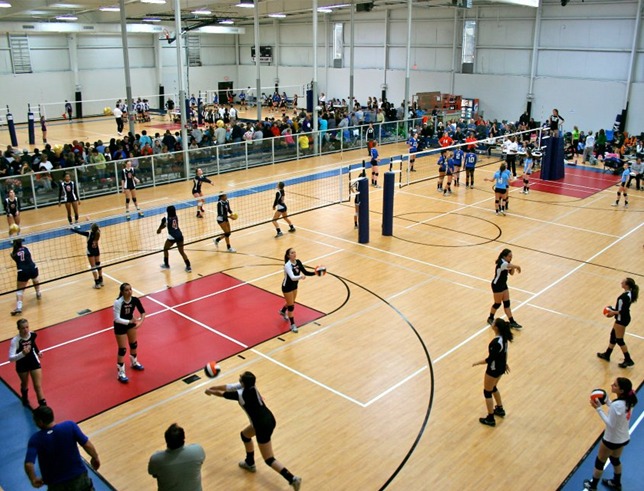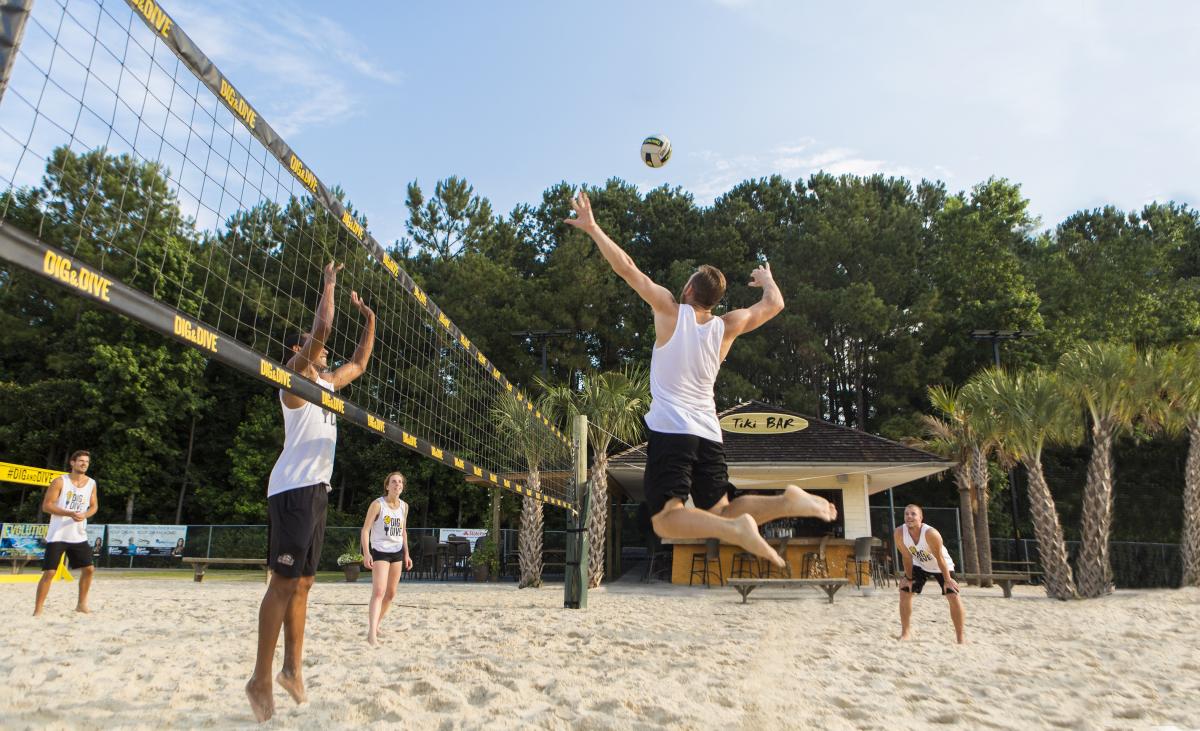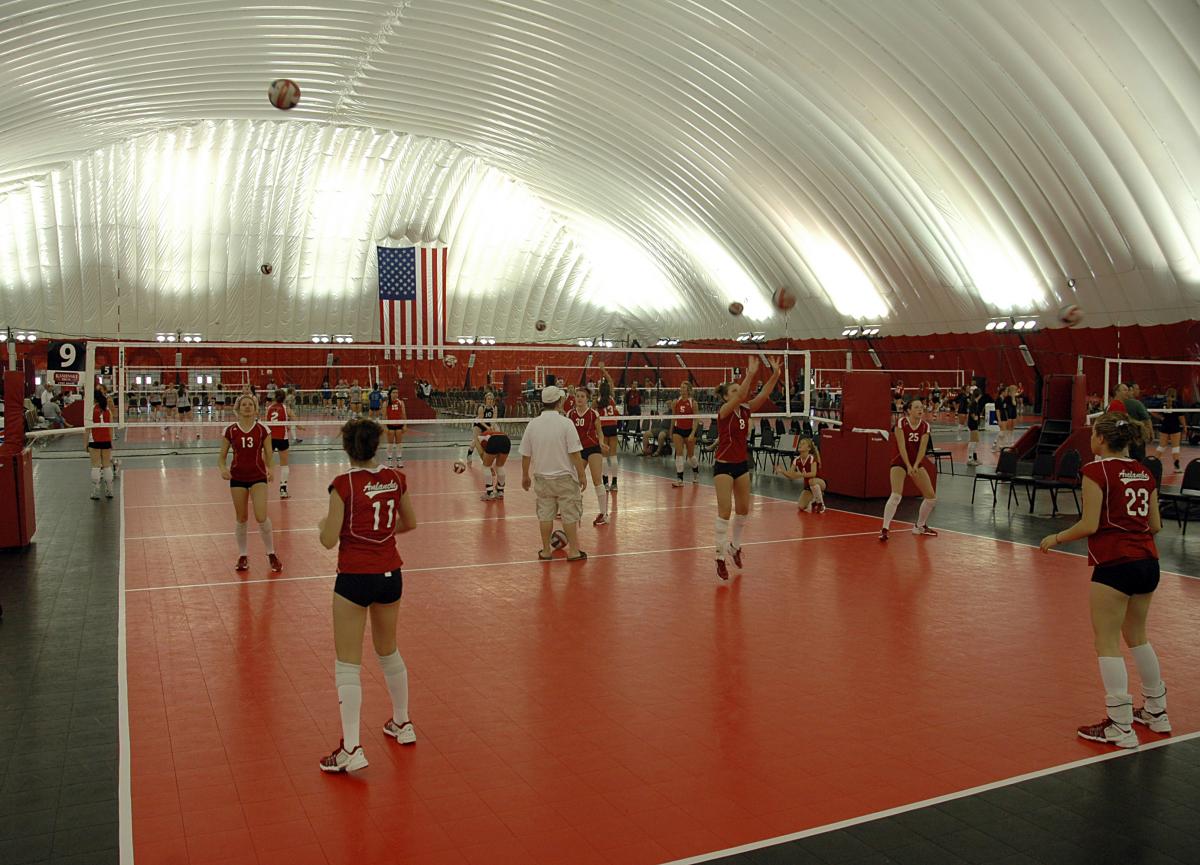“We’re already seeing the impact from the Olympics, as more kids are trying the sport,” says John Kessel, the director of sports development for USA Volleyball, just weeks after the Games ended. In part, that’s because USA Volleyball debuted the nationwide “Open Court” program at the end of August in 48 markets, which encourages potential new players to try the sport for free. USA Volleyball, which has about 384,000 members, also is reaching out to schools with its STEM program, an educational enrichment program that includes curriculum modules in education, athletics and exercise.
Overall, U.S. participation has increased slightly for court volleyball (to 6.42 million players, according to 2016 data from the Physical Activity Council) and for beach volleyball (to 4.79 million), while dipping slightly for grass volleyball (to 3.89 million).
In January 2015, beach volleyball (formerly called sand volleyball), became the 90th NCAA Championship Sport, and the first NCAA Beach Volleyball Championship was held in May 2016 in Gulf Shores, Alabama. For 2015-2016, more than 60 four-year colleges, including all three NCAA divisions and several NAIA schools, and over 30 two-year colleges are sponsoring varsity beach volleyball programs. Nearly 50 percent of collegiate beach programs have scholarship support, separate from the money dedicated to their court volleyball teams.
Whether indoors, on sand or on grass, volleyball tournaments and events are becoming increasingly popular across the country, for all ages. Across the country, cities are playing the angles and finding the strengths that help them achieve success in hosting the sport.
Hosting Championships, Camps and More in Birmingham, Alabama
“Volleyball has been a growing sport for us,” says Faye Oates, the director of the Birmingham CrossPlex, a multi-sport facility that can accommodate up to
The venue hosts club and high school tournaments throughout the year, including weeklong summer camps for middle and high school athletes. A key partnership is with the NCAA, and Oates is hoping Birmingham CrossPlex, with its 75,000 square feet of competition floor space (and 750,000 square feet of overall space) will in the future be the site of the Division II volleyball championships.
For volleyball, the CrossPlex can accommodate 4,000 spectators, and also offers seven VIP suites overlooking the action, with hospitality capabilities and private box seating. While city-owned, the CrossPlex “is a competition facility, not a park and rec and not open to the community,” Oates says. “It’s important that we keep high-quality competition here.”
Birmingham, she adds, “doesn't have professional sports, so when you come here to play, you’re a big deal to us.”
Capitalizing on Indoor Courts in Eugene/Cascades, Oregon
“Volleyball is our No. 1 youth sport,” says Joey Jewell, director of sports sales and development for Eugene, Cascades & Coast Sports. “We have a very well-developed system here, with many opportunities to play, and it’s continuing to grow.”
The area does get rain, so Jewell says there’s an emphasis on indoor sports like volleyball. Top venues include the Willamalane Center for Sports & Recreation with 12 courts, University of Oregon Student Recreation Center with 14 courts, Moshofsky Center with 16 courts and the Lane Events Center, also with 16 courts. In August, the Willamalane center hosted the Northwest Athletic Conference Sports Festival, which featured 96 volleyball matches and about 1,800 student-athletes. Adding to the appeal is the support the sport gets from the local club, the Columbia Empire Volleyball Association, which helps run many of the events.
On the radar is developing beach volleyball. “The Oregon Dunes Recreational Area has over 40 miles of sand dunes,” says Angie Riley of Eugene, Cascades & Coast Sports. “We feel it will be the perfect spot for a beach volleyball tournament.”
Fayetteville, North Carolina: Competition is Already Built-In
One of the unique aspects of Fayetteville, says John Meroski, CEO of the Fayetteville Area Sports Commission, is the competitive environment when it c
So for events such as volleyball, that means sports venues that can handle large tournaments, along with area volleyball clubs that help provide support and volunteers for events coming into the community.
One of the newest venues is the Freedom Courts Sportsplex, which can be set up for up to 10 volleyball courts. “We do a lot of regional, state and local tournaments at Freedom Courts,” Meroski says. The facility also holds camps and training sessions. Fayetteville also has the Crown Center, a complex of four buildings, three of which can be used for multiple courts for volleyball. The largest building in the Crown Center can seat 8,000 spectators. Other venues include Methodist University and Fayetteville State.
Beach volleyball also is coming on strong. “We have a few parks and lakes that have sand volleyball,” Meroski says. “And if we wanted to do large outdoor beach volleyball events, we can set it up at the Fayetteville Motor Speedway.”
An Unexpected Strength in Myrtle Beach, South Carolina
“We have an interesting dynamic with volleyball,” says Mike Anderson, the executive director of sports tourism for the Myrtle Beach Regional Sports Alliance. “We’re on the beach, but indoor volleyball is stronger than beach volleyball.”
In part, that’s because of the Myrtle Beach Sports Center, which opened in March 2015 and can accommodate 16 courts. “Volleyball has been in our market for many years, but we’re seeing an explosion now.” The new sports center adds to the existing 16 volleyball courts at the Myrtle Beach Convention Center. “Since volleyball is a winter sport, it’s great for our destination when the hotel market here is a bit softer.”
Myrtle Beach, of course, is a strong summer destination, and most of the facilities on the beach don’t want to block off sand volleyball courts during the tourist season. “That’s why we really don’t host anything competitive on our beaches during the summer,” Anderson says.
But that thinking might be changing. Recently, Coastal Carolina University added a women’s beach volleyball team and is building a three-court beach volleyball facility. And Anderson says there is interest in exploring the opportunities that might come with building an outdoor sand sports facility that would include beach volleyball. All of this is good news for the sport, which receives strong local support with the Grand Strand Volleyball Club.
Spokane, Washington: Strong Ties to USA Volleyball
The Pacific Northwest Qualifier, which fills more hotel rooms in the city than any other sporting event, is one of at least four events held each year at the Spokane Convention Center, which can put 18 volleyball courts on the floor. The Qualifier brings in about 650 teams and takes about 10 days to play.
Other events at the Spokane Convention Center, including a regional championship with about 300 teams, are put on by the Evergreen Region Volleyball Association. Another tournament, the “Sizzler” in January, is a “really fun adult event that attracts nearly 70 teams from all over the Northwest,” Twohig says.
“We have a lot of local support,” he adds. “We’ve had a very strong volleyball community here for 30 years. Our junior program started getting very strong about 30 years ago, and continues to grow.”
Beach Volleyball: Coming on Strong in Wilmington, North Carolina
Beach volleyball is “the most prevalent” form of the sport in the Wilmington area, says Bree Nidds, the sports sales manager for the Wilmington and Beaches CVB. “And I see it growing, especially with junior volleyball.” Recently, the University of North Carolina-Wilmington added a beach volleyball team.

“Beyond that, we have natural beaches that can host volleyball tournaments,” Nidds says. In 2015, EVP Beach Volleyball held an event at Carolina Beach, and in 2016, the organization hosted a tourney at the Dig & Dive.
Indoor volleyball also can be played at the Wilmington Convention Center, Cape Fear College Sports Center and the UNC-Wilmington. And Nidds says there’s been interest in bringing a grass volleyball tournament to the area, which could be accommodated at parks in New Hanover and Wilmington.
In Wisconsin, a Booming Volleyball Scene Brings in Tournaments on All Surfaces
With its location on Lake Michigan, “We have a very robust beach volleyball environment in Wisconsin,” says Carla Minsky, who assists the state’s Department of Tourism with its sports marketing efforts. In Racine, in the southern part of the state (and an easy trek from Chicago), North Beach Park offers more than 50 acres of groomed sand and hosts frequent pro volleyball events.
Milwaukee also hosts a number of beach volleyball tournaments, including last year the USA Volleyball 18’s Girls’ Junior National Championships and USA Volleyball Junior Beach Championships. Farther north, Two Rivers hosted the EVP Coolest Coast Pro-Am beach volleyball tourney at Neshotah Beach.
Oshkosh is home to the massive Waupaca Boatride Volleyball Tournament, also known as the US Open of Grass Volleyball. The event, held in July, has both grass and beach volleyball in many age divisions, and this year surpassed 1,300 registered teams.
“One of the most popular places for tournaments or camps is Wisconsin Dells,” says Minsky. Known as the “waterpark capital of the world,” Wisconsin Dells has both attractions and hotels. Most popular for volleyball is the Woodside Wisconsin Dells Center Dome, which has a showcase volleyball tournament in February with 300 teams from across the U.S. “When tournament and event organizers choose Wisconsin Dells, it’s very common for attendance to go up for their events,” Minsky says.
Festivals and Championships on the Courts of Yakima, Washington
Constructed in 1989, then renovated in 2002, the Yakima Valley SunDome is a flexible multi-purpose facility that has hosted many volleyball events, i
“The Yakima Valley has a long history in volleyball,” he says. “Club volleyball is very big in our community, with the largest organization being Team Yakima. And now we’re getting more volleyball clubs popping up.” The Yakima Valley extends about 30 miles to the north and 40 miles to the south of the city.
“The biggest thing for us is developing good relationships with our venues,” he notes. “We also develop great relationships with the officials’ organization. Plus, we’re fortunate here in Yakima to have a great lodging association that will work with us with any events we bring in.”

